Engagement Ring - In Progress
Setting
Stone
Purchase any Engagement Ring and receive a $250 Gift Card for your Wedding Band. Ends soon.
Deepen the well of love in the world.
Born from antique mine-cut stones, Cushions have soft corners, like a pillow. Cushion cut diamonds are timeless. In fact, the Hope and Tiffany Diamonds are both Cushions! Because each cushion cut diamond varies greatly in proportion, stones can range from perfectly square to quite rectangular. Some Cushions display large facets which give big flashes of sparkle. For couples who want an explosion of smaller sparkle in their Cushion cut engagement ring, modern cuts have also been developed.
Cushions are all unique! For that reason, specifications vary greatly. Some are square, some are rectangular. Some have antique “big flash” sparkle, others have more modern crushed-ice “scintillation.” Like all fancy diamonds, GIA does not give cut grades for cushions. So, when a jeweler states a cushion cut is “ideal” or “excellent,” that is the jeweler’s opinion. Also, there is no industry standard for what makes a great Cushion diamond. As a result, picking a Cushion can be a little tricky. To help our couples, we have included our suggestions for choosing a beautiful, well-proportioned stone below.
TRADITIONAL “CHUNKY” CUSHION TIPS
Here is an example of an ideal cut traditional “chunky” cushion with even contrast/brilliance and a washed out cushion without much sparkle:
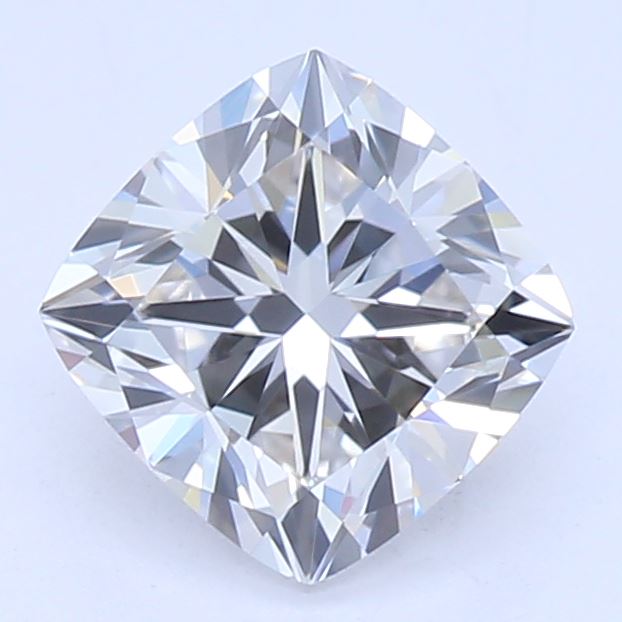
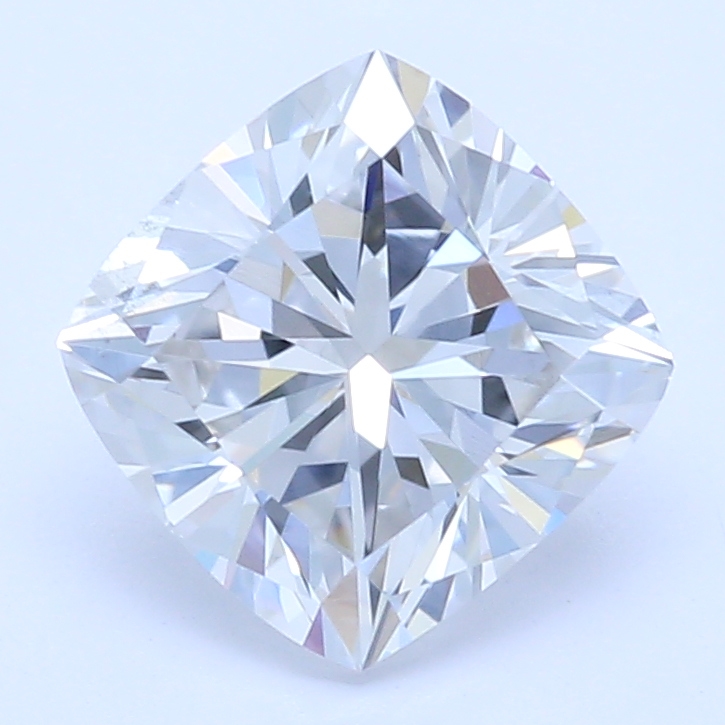
CRUSHED ICE CUSHION TIPS
Here is an example of a crushed ice cushion with decent contrast (crushed ice will overall have less contrast than chunky stones) as compared with a crushed ice without contrast:


Here are our table and depth recommendations:
| IDEAL/EXCELLENT | PREMIUM | GOOD | |
| TABLE | 60-68 | 69-70 | 71+ |
| DEPTH | 61 – 68 | 69-70 | 71+ |
The “color” of a Cushion is its whiteness or its yellow hint. Diamonds are graded on a scale beginning with “D” color and ending with “Z” color. So, D, E, and F color diamonds are colorless, like water. G through Z color diamonds have increasing tints of yellow.
Did you know the cushion cut diamond was designed before electricity? And, because warm colored candlelight masks color better than today’s bright white LEDs, many Victorian Cushion cuts were warm-toned colors. This is why cushions are also referred to as “candlelight” diamonds today! Some couples prefer warmer colored Cushion cut engagement rings for this reason. Others prefer a more colorless look.
Here is an example of an F colored cushion cut, next to an I colored cushion!
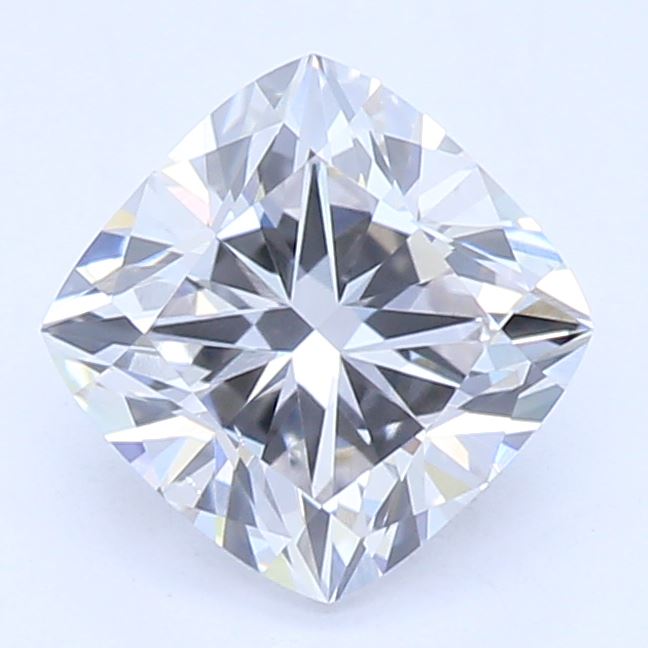
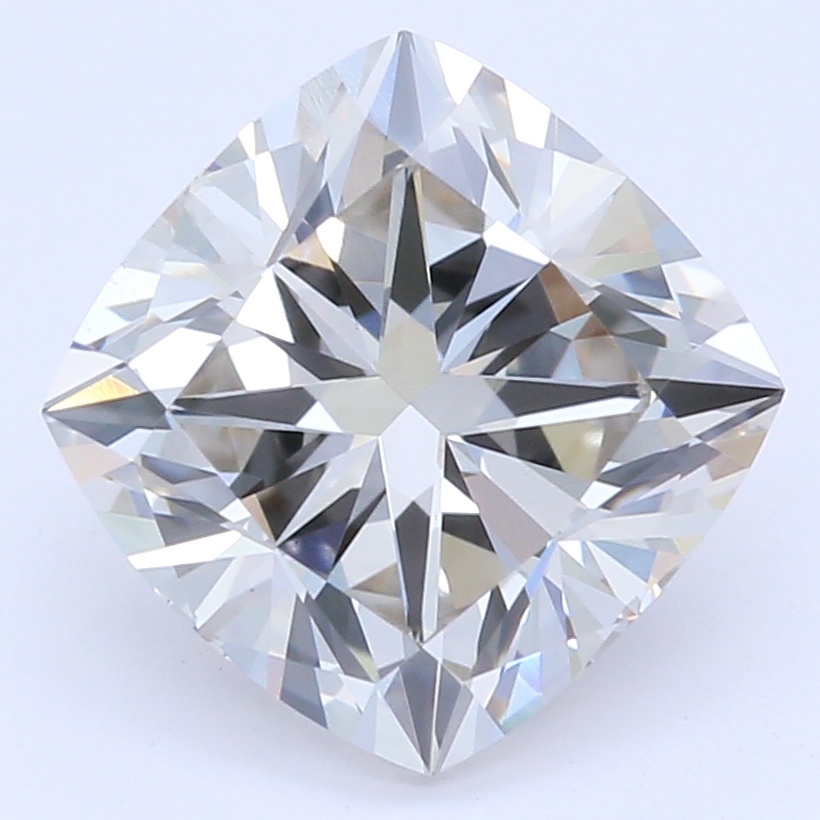
Here is an example of a traditional G colored cushion next to a K colored old mine cushion!


| WHITE METAL | YELLOW OR ROSE METAL | VINTAGE LOOK (email care@doamore.com! | |
| >1ct | D-G | D-I | J+ |
| 1-2ct | D-G | D-H | J+ |
| 2+ct | D-F | D-G | I-J+ |
The clarity of your Cushion is how “crystal clear” the gem is, that is to say, how many internal marks (“inclusions”) it has. Almost all diamonds have some inclusions, and they are all unique. It is like your diamond’s fingerprint! Because Cushions are “brilliant” stones, they give off a lot of sparkle. This is important in terms of clarity because sparkle can mask inclusions.
As a result, couples choosing Cushion diamonds can often select VS2 and they will appear flawless to the naked eye. This is a great value! Visually inspecting the gem is important, however, as some larger stones may show small inclusions that are not obvious, but still eye visible. Every engagement ring purchased from Do Amore is confirmed “eye-clean.” We inform the customer if it isn’t.
Here is an example of an SI1 clarity cushion diamond next to a VS1 clarity cushion cut!
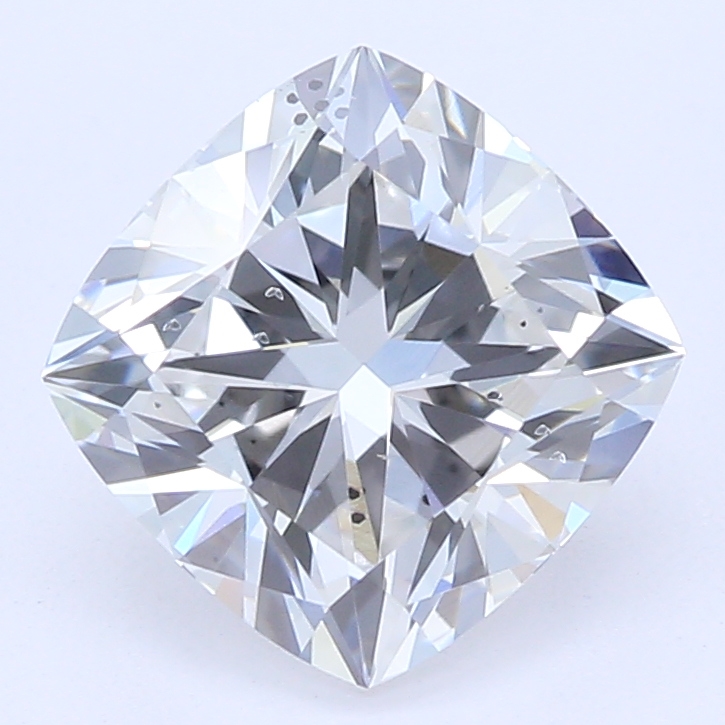
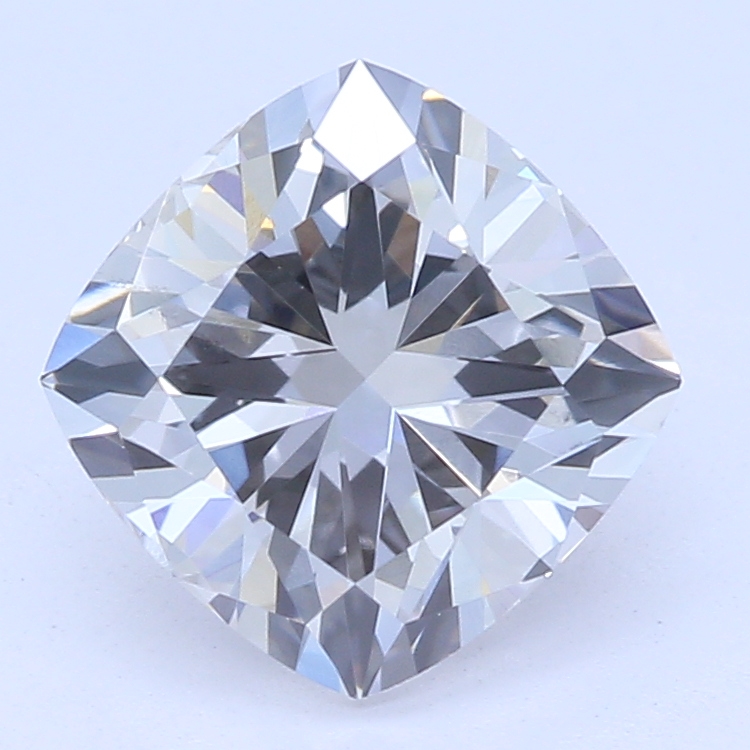
Here is what we recommend:
| CLARITY | |
| >1ct | SI1+ |
| 1-2ct | VS2+ |
| 2+ct | VS1+ |
All diamonds in our conflict free and lab created diamond search engines have the length to width listed. This ratio, which is simply the length divided by the width, determines how square or elongated the Cushion is. A larger the length to width ratio, the taller the diamond is (a more elongated or rectangular stone). The smaller the length to width ratio, the squarer the stone.
SQUARE CUSHION – If you want a perfectly square Cushion diamond, choose a Cushion with a length to width ratio less than 1.03.
ELONGATED CUSHION – Couples that want an elongated Cushion diamond should choose a length-to-width above 1.10.
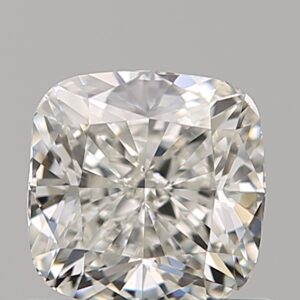
1.00
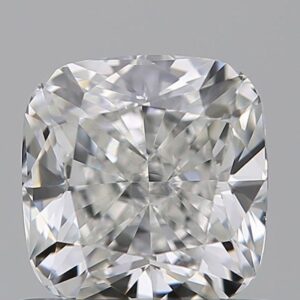
1.03
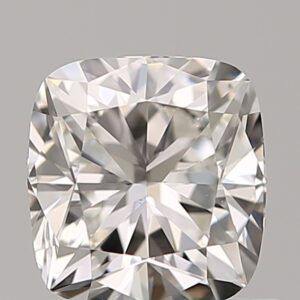
1.05
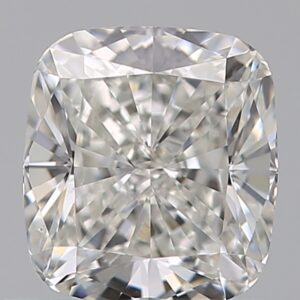
1.10
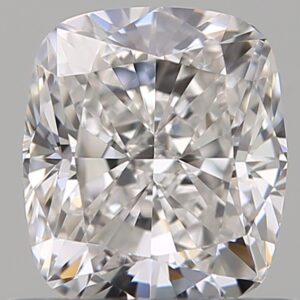
1.15
When looking for a Cushion cut diamond, make sure you get the maximum measurements for your carat weight. Cushion cuts are notorious for their deep proportions. So, look for a stone no deeper than 68% – and try to get under 67%! This will help ensure you get the biggest bang for your buck.
All of our Recommended conflict free diamonds have their weight maximized.
01.
Photo & Video - Always ask the jeweler for a close-up picture or video. Check out its length-to-width ratio and facet size!
02.
Inspect It - Ask the jeweler to physically see the diamond and inspect it. Look for any eye-visible inclusions, and confirm the size sparkle you want!
03.
Measure It - Make sure you get the biggest measurements for your diamond’s carat size. Remember, try to get a depth percentage under 68% for the most value.